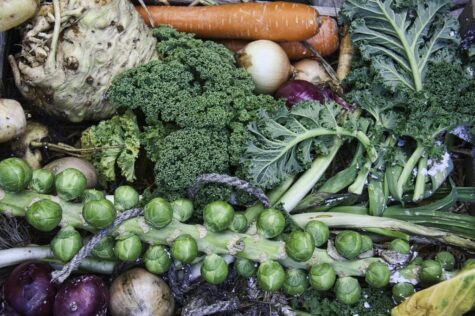Welcome, spice fiends! If you like a little bit of kick in your kitchen, learning how to grow chilli peppers is going to be a very satisfying experience. There are lots of chilli pepper varieties, some of which will give your tongue a tantalising tingle, and others that will have you running for a glass of milk.
When you start growing your own chillies, you’ll quickly realise there is a far greater range of colour, shape and size than what you can typically find on the supermarket shelves. Generally speaking, you need higher growing temperatures to reach those higher scoville (spiciness) ratings. However, even in the UK, it’s possible to grow chillies that will bring a little pizzazz to your plate. Let’s take a look at how to grow chilli peppers in your garden.
Growing Chillies: Where to Begin?

As warmth really is essential for achieving that chilli pepper sizzle, it’s best to start your chillies off indoors (under a propagator if you can), and harden them off in a greenhouse or outside in time for summer.
Another factor to consider is that, to get the right balance of root/shoot growth, it’s recommended that you repot chilli peppers several times before they’re mature. This can be a bit of a pain, honestly, but it will lead to better gains. To be fair though, I have found myself short on pots every now and then, and having two plants in the same pot isn’t the end of the world.
Sow in: February, March, April
Move outdoors in: June
Harvest in: July, August, September, October
Sowing chilli peppers

If you do choose to start your chilli peppers off indoors, you can sow your seeds as early as February, to give your seedlings the best start. Use potting compost in small pots, planting 3-5 seeds per pot (there’s a chance that not all of them will geminate).
You’ll see shoots appear quite quickly, especially if you use a lid or heated propagation station (a sunny kitchen windowsill works perfectly fine though, in my experience). Once you do, you can take off the cover (but keep them warm), and separate them out into larger individual pots once they’re 2-3cm tall.
How to grow chilli peppers

Keep an eye out for roots poking out the bottom of the pot, and repot into a 13cm diameter pot when they appear. If your plant starts to lean over or become top heavy (which they might do in the bigger pot, when they start growing over 20cm high, or as they begin to fruit), you can add a slender stake to keep them upright.
The next step of hot to grow chilli peppers is pinching out. When your plant reaches about 30cm tall, it’s recommended that you pinch (or snip with sharp scissors) the top of the plant off, so it focuses its energy into producing fruit. When it flowers, you can pinch off the ends of branches past the flowering section, too.
When the weather starts staying warm (towards the end of May), you should repot your chilli peppers one last time, into 22cm pots. As I mentioned before, I don’t always do this with every plant – it just depends on what pots I have available – and for the most part, they’re all fine (just some of them are smaller). At this stage, you could also plant them straight into the ground.
Either way, before you move your chillies outside, you should harden them off. Hardening off lets your plant become accustomed to outdoor conditions, and basically involves moving your plants outside for a couple of hours a day, gradually increasing the length of time over the course of two weeks. So, eventually, your plants spend all day and night outside. As chilli plants can stay relatively small, I personally tend to bring mine inside every night, and leave bigger plants (like tomatoes) in my limited garden area outside.
Keep your chilli pepper plants well watered and, when your flowers start to appear, mix in some general fertiliser. I tend to use the same stuff as I do for tomatoes.
Harvesting chilli peppers

The longer you leave your chillies on the plant, the better they generally taste (especially if you’re going to be preserving them. However, the sooner you snip them off, the quicker your chilli pepper plant will start growing more. So, it’s a bit of a delicate balance. You don’t have to wait until the chillies are completely red, though.
Common Problems when Growing Chillies

Chilli peppers were my first foray into learning how to grow vegetables at home. So, the first couple of batches were also my first introduction to some of the most irritating bugs I’ve ever come across! Here are the most common problems you’ll encounter when you’re learning how to grow chilli peppers.
- Whitefly are tiny white bugs that suck all the sap from your plants, making them limp and struggle to produce fruit. Plus, they excrete a sticky, ‘honeydew’ substance that can cause black sooty mould to grow. An all-round pain, but you might be able to control them with biological control and/or sticky traps.
- Aphids – yep, my personal nemesis. I never had a problem with aphids until a babysat a friend’s tomato plant, which must have had aphids hidden away on it somewhere. They basically do the same damage as whitefly, and should be handled in a similar way. In theory, you can wash aphids off (and keep them at bay) with a gentle dish soap/detergent, pinch off carrier leaves, and squish lone rangers. However, I couldn’t stop them from multiplying, so I quarantined my affected plants in order to save my healthy ones. Read more tips on getting rid of aphids.
- Grey mould is a fuzzy fungus that will develop and spread if your plants are too moist. I haven’t seen it on chilli peppers before personally, but it can appear on other soft fruit, like strawberries, too. If you notice grey mould on leaves, stems, or debris on the soil, remove it asap and move the plant to somewhere less humid.
I’m hugely biased towards chilli peppers, as they were my starter crop, and I loved adding them to different dishes for a bit of spice. They’re a really easy crop to grow, and learning how to grow chilli peppers is a fun way to introduce children to the process of cultivating and cooking your own food. Take a look at our guides to growing tomatoes, green beans and cucumbers for a whole range!

Save this pin for later







